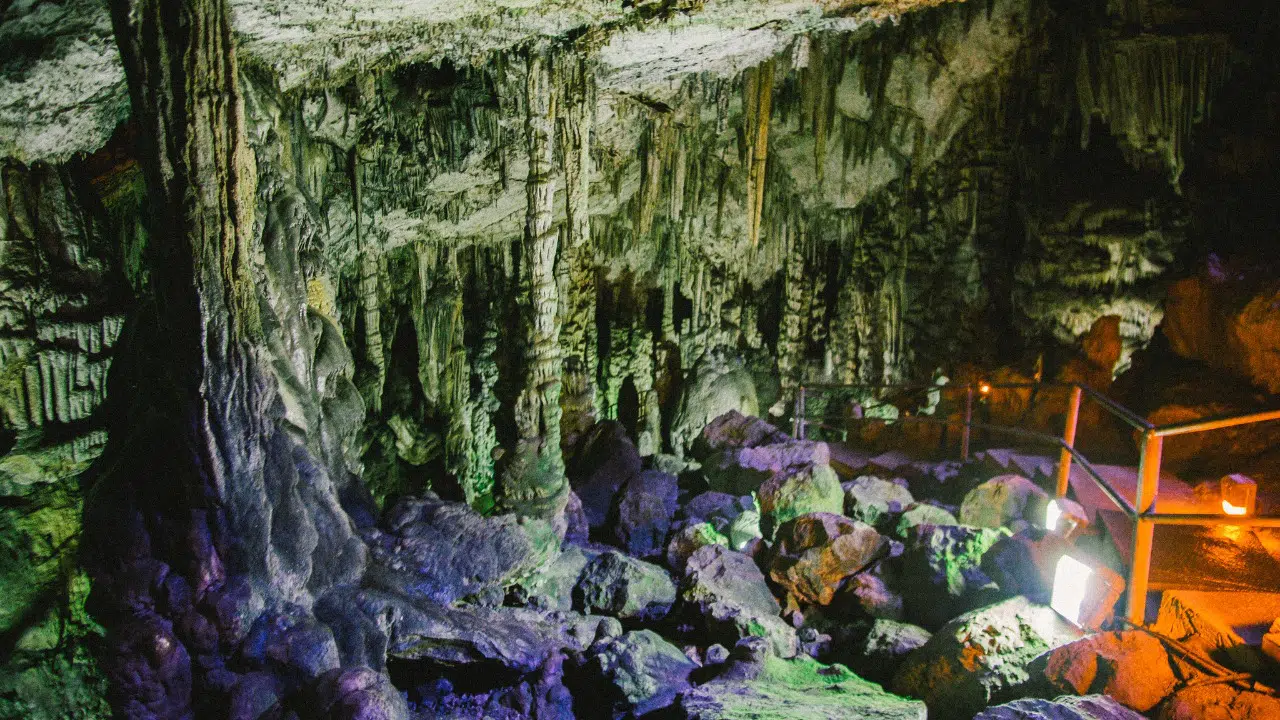
There are hundreds of caves scattered around the Greek island of Crete—and all of them are worth a visit, either for their natural features or for the history they contain. Many of the caves are open to the public and boast an unexpected sidelight to the island’s scenery. Here are five of the most beautiful caves of Crete.
Melidoni Cave
Melidoni Cave (also locally known as Gerontospilios, or “the old cave”) is located in the prefecture of Rethymno and is famous for being one of the theaters of the struggle for Cretan independence.
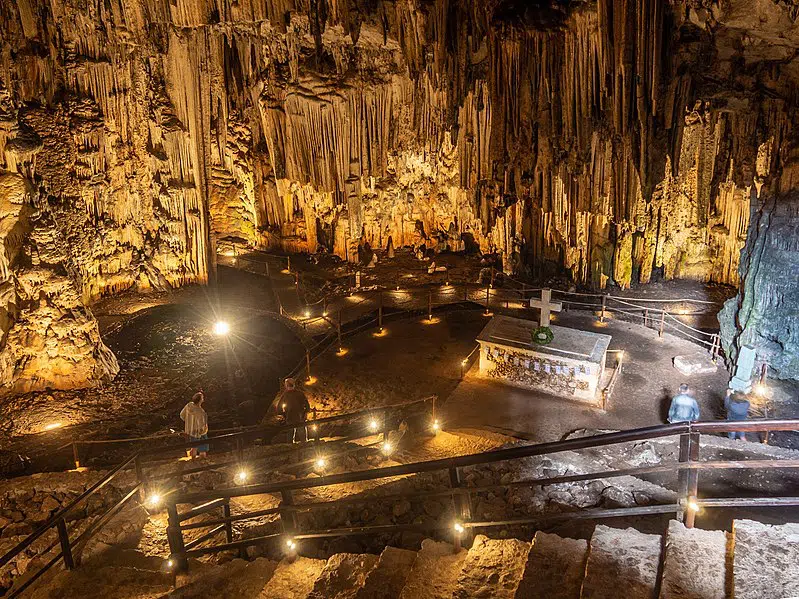
In 1824 during the early uprisings against the Ottoman oppression, approximately 300 villagers took refuge in the cave and refused to leave. A Muslim commander sent two messengers to them, but in reply, the rebels shot them. The Ottomans then tried to force the villagers out by blocking the entrance, thus cutting off their main air supply.
The refugees simply opened new air passages every evening; however, several days afterward, the Ottoman troops piled flammable material at the mouth of the cave and set fire to it. Everyone inside perished and the cave turned into their tomb.
The cave is probably one of the most impressive on the island. According to Greek mythology, the cave used to be the home of Talos, a giant made of bronze who would be the protector of the Cretan coasts. Archaeological excavations have also proved that the area used to be an important Minoan shrine for the worship of Eileithyia, the goddess of fertility.
Today, visitors can appreciate a number of stalactites and stalagmites on the walls, as well as a huge central chamber home to a shrine and ossuary in memory to the victims of the Ottoman massacre.
Sfentoni Cave
Sfentoni Cave (also known as Zoniana) is located about 21 kilometers (12 miles) from Melidoni cave also in the area of Rethymno. This remains the largest cave complex on Crete that is open to the public.
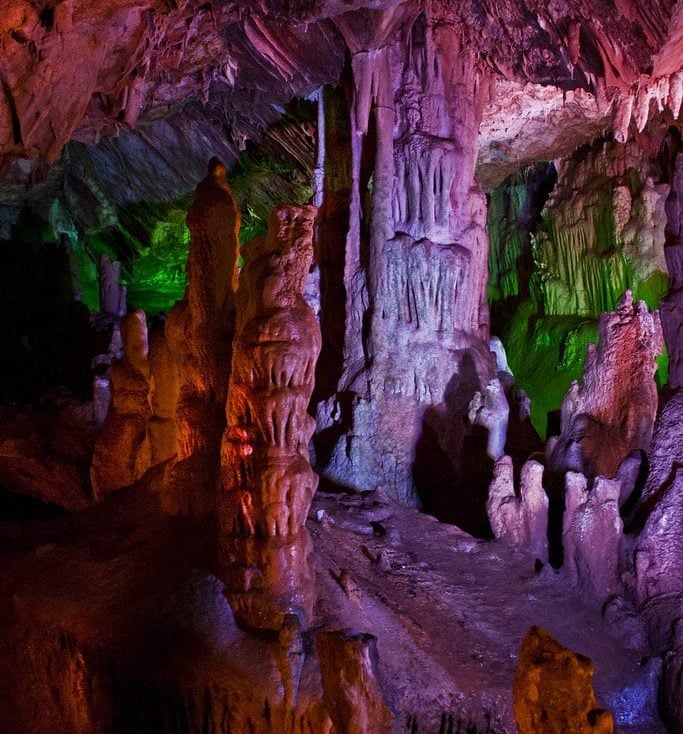
Legend has it that the area was discovered by an eight-year-old girl who was lured away by fairies and found dead in the depths of the cave.
The magnificent cave extends for about 500 meters (1,640 feet) into a spur of the famous Mount Psiloritis, the highest peak on the island. It is possible to visit the caverns inside with a guided tour since visitors are prohibited from exploring the cave on their own.
Impressive displays of petrified waves, stalactites, and stalagmites are to be seen throughout the cave, most of them over five million years old. Extending over an impressive 3000-square-meter area, the cave contains unique views of how nature shapes such a bizarre spectacle through the action of water and minerals.
Dhiktean Cave
Dhiktean Cave (also known as ‘Psychro’) can be found in the prefecture of Lasithi, in the plateau of the same name.

According to legend, it was here that Rhea gave birth to Zeus. Myth tells us that his father, Kronos, had received a warning telling him that one of his children would overthrow him. For this reason, Kronos consumed all of his offspring.
Rhea, however, was smarter than Kronos, and when Zeus was born, she gave a rock in place of the baby for him to swallow. She hid Zeus in the cave and left him under the protection of the Kouretes, who would beat on their shields outside the cave so as to prevent Kronos from hearing Zeus’ cries.
Legend also has it that, once grown, Zeus spent his youth in another cave on Mount Psiloritis. Dhiktean cave was certainly a cult center during the Minoan period as well as afterwards most likely. Explorations have also brought to light offerings that had been made both to Zeus and to the Mother Goddess.
The cave is quite easy to explore, thanks to cement steps and electric lights; the path leads visitors along a circular lane around the bottom of the cave and an artificial lake.
The Cave of the Elephants
Moving to the prefecture of Chania close to Souda Bay one can also visit an underwater cave discovered by a snorkeler in 1999. The first mission to explore the cave only took place in 2000; it is known as the Cave of the Elephants.
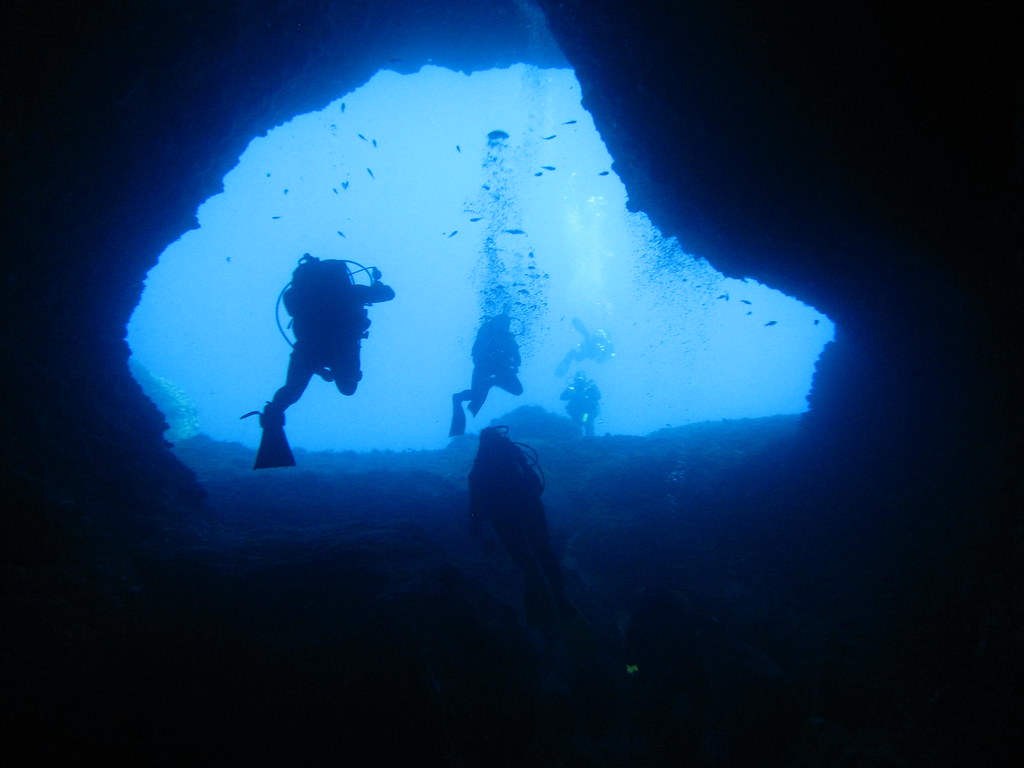
The fantastic find of the cave surprised not only the locals of the island but also the entire country. As well as the unique beauty of the place, the exploration resulted in the discovery of the bones of an unknown elephant species.
The paleontological materials found inside consisted mostly of elephant bones, as well as a small number of deer bones. This was a completely novel finding for the island since they came from a cave that is now underwater.
Shaped in limestone from the Mesozoic era, the entrance of the cave is nine meters (thirty feet) in height , 6.5 meters wide, and starts at a depth of ten meters below sea level. It continues in a tunnel which is about forty meters (131 feet) in length. The main chamber of the cave is partly filled with water, ranging from just a few centimeters to almost four meters in depth.
The cave’s roof features stalactites with a marked shade of red, thus indicating the high content of iron in the rock. The many stalactites found on the ground indicate—just like the elephant and other animal bones—that the cave was not always under water.
Chainospilios Cave
For those visiting the prefecture of Heraklion, the Cave of Chainospilios (also Marmarospilios) can be found not far from the village of Kamaraki.
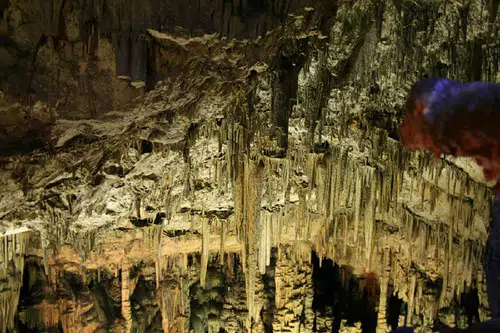
Locally known as the “Labyrinth,” this long, narrow cave presents “galleries” that used to be the bed of an old underground river.
Two hundred meters long, the cave presents a shorter parallel gallery richly decorated with stunning stalagmite columns over six meters (nineteen feet) high which date back over 12 million years. The roof shows the corrosive effects caused by the river water once present in the cave.
In some areas of the cave, shells have been found from periods ranging from pre-Minoan times to the years of the Ottoman occupation. Chainospilios refers to the cave of the “Chainides” (or Cretan rebels) who used the area as their base to hide from Turkish commanders.
See all the latest news from Greece and the world at Greekreporter.com. Contact our newsroom to report an update or send your story, photos and videos. Follow GR on Google News and subscribe here to our daily email!



